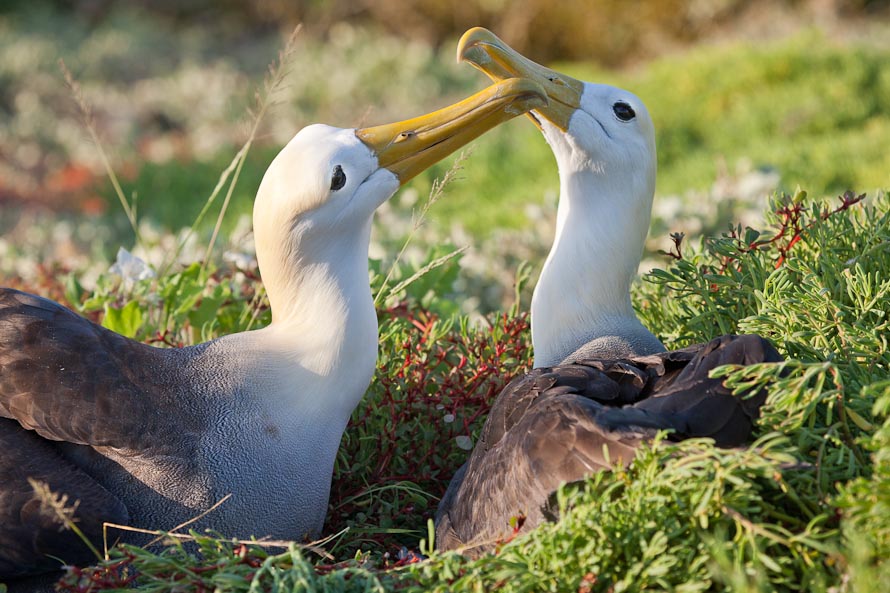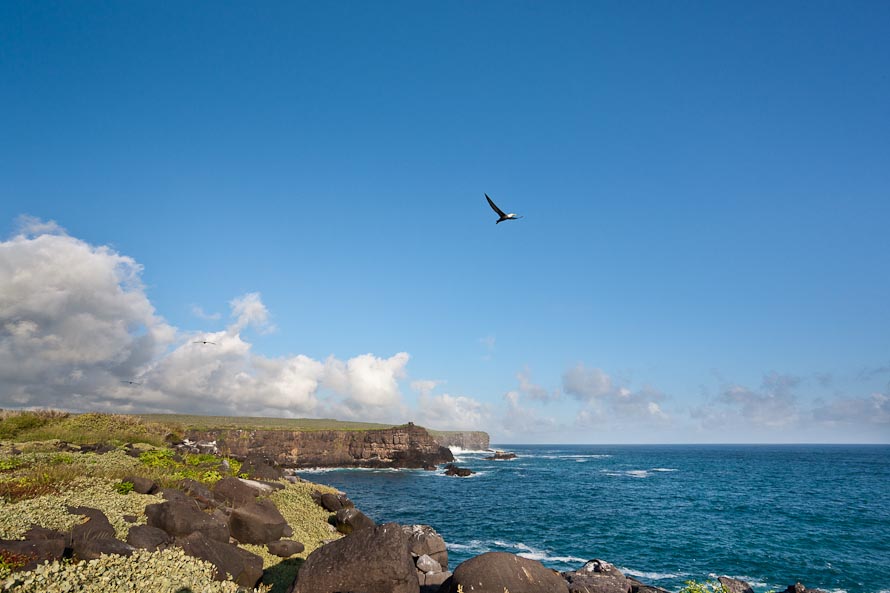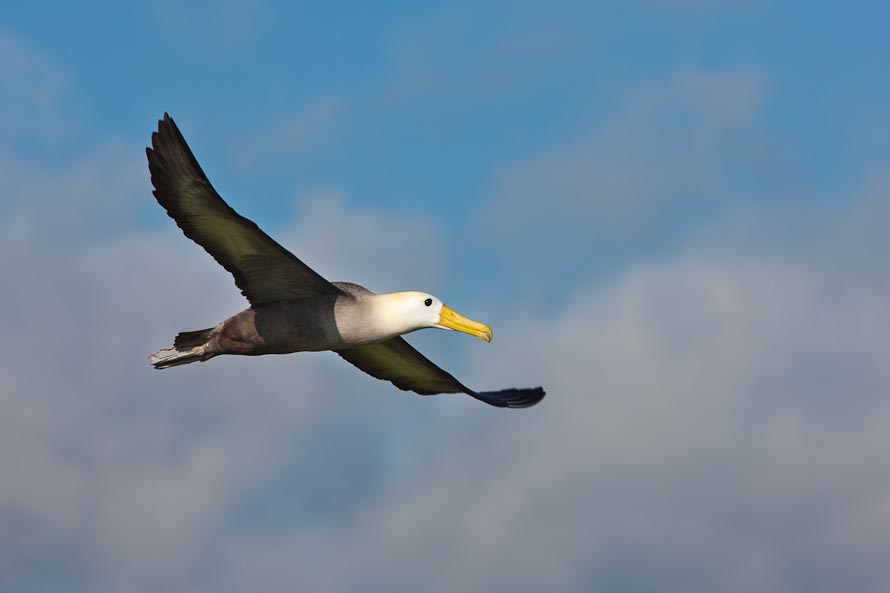
Nesting pair of Waved albatross, Punto Suarez, Espanola Island, Galapagos Islands, Ecuador. Canon 1Ds Mark III, 100-400mm f/4L IS (200mm), 1/400 sec. @ f/7.1, ISO 200
The Waved Albatross, sometimes called the Galapagos Albatross, breeds primarily on Espanola Island. Like other albatrosses, it comes to shore only to breed and rear young. In the Archipelago, this happens in response to food availability, which is generally in early April, and we were fortunate enough to see the very beginning of their arrival to land. They are a beautiful, large bird, with a wingspan of about 7 feet, and enter into an elaborate courtship ritual which includes bill clacking and bowing. There were just a few pairs on land, with many flying over looking for nesting sights and mates.

Waved albatross fly over Punto Suarez, Espanola Island, Galapagos Islands, Ecuador. Canon 1Ds Mark III, 17-40mm f/4L, 1/800 sec. @ f/8, ISO 400
I used all my lenses to photograph these birds, and the warm, late afternoon light helped make exposures of a white headed bird manageable.

Waved albatross fly over Punto Suarez, Espanola Island, Galapagos Islands, Ecuador. Canon 1Ds Mark III, 400mm f/4L DO IS, 1/1000 sec @ f/8, ISO 400






